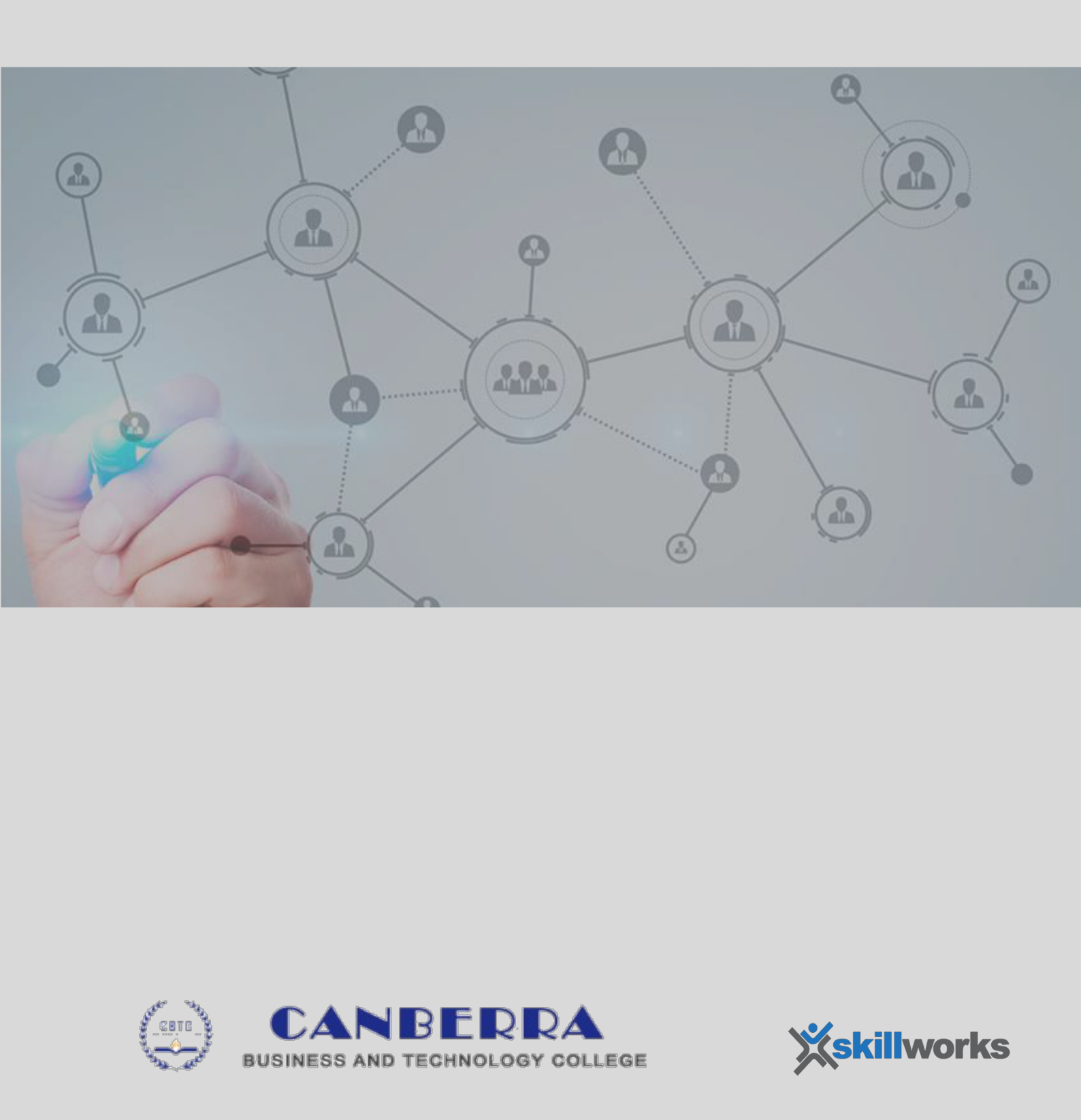Briefly describe the format and contents the report
This assessment task/work is submitted in accordance with the college’s Plagiarism and Academic Misconduct Policy. I also understand the serious nature of academic dishonesty (such as plagiarism) and the penalties attached to being found guilty of committing such offence
No part of this assessment task/work has been copied from any other source without acknowledgement of the source
Late submission: Late submission without a prior approval of the trainer/assessor will not be accepted and may delay the assessment outcome. You may also need to resubmit work as per college’s Reassessment Policy.
I declare that this assessment is my own work.
LEARNER’S GUIDE

BSBTEC601 Review Organisational Digital Strategy
Supporting: BSB60120 Advanced Diploma of Business; May also support other qualifications based on respective packaging rules
All the websites and external resources mentioned in this publication, including any information linked to or referred to public domain information, are copyrighted to their respective owners. Web links are used as examples for reference purpose only and may have changed since publication of this resource. Skillworks Australia Pty Ltd or the author do not claim endorse the views expressed by them.
Skillworks Australia Pty Ltd
Place
Validation Team
Version History

on
Authority
7. Academic Policies and Processes 35
| : | ||
| : |
|
|
|
: | |
| : | ||
Welcome to the learner’s guide for this unit of competency for the qualification BSB60120 Advanced Diploma of Business. This guide provides you with essential information on competency standards, delivery plan and schedule, assessment plan, assessment tasks and learning resources for this unit of competency.
The purpose of this learner’s guide is to:
List resources which may assist in student learning and assessment tasks
This unit also incorporates Foundation Skills that are embedded within the competency elements.
On successful completion of this unit, the learner/trainee will be able to;
Develop plan for review of digital strategy
As well as demonstrating the performance criteria, to be assessed as competent, the learner must demonstrate their ability to apply the required knowledge and skills in a range of situations. These are summarised in the Competency Standards section below.
Prerequisite Requirements
Students may also apply for Recognition of Prior Learning (RPL) by providing evidence that they have the required skills and knowledge in the specific areas of competency through work/industry experience and/or completed eligible assessments in equivalent or higher qualification.
Please refer to college’s RPL/Credit Transfer Policy for more information and applicable procedures. The policy is available either through the faculty coordinator or college’s website.
assessment requirements and evidence guide.
They can also be viewed at:
Graduates at this level will have a broad range of cognitive, technical and communication skills to select and apply methods and technologies to:
Analyse information to complete a range of activities
The following performance criteria specify the required level of performance for each of the elements of competency:
In the course of the above, the candidate must:
 Develop a review plan
including:
Develop a review plan
including:
Key features of organisational policies and procedures, and objectives
Digital strategy review methodologies
Common recommendations for actions to improve digital strategy
Methods of distribution of the final review report.
It is expected that training/learning sessions will incorporate group/collaborative activities and tasks that are relevant to the learning and evidence outcomes in this unit. The emphasis of learning, where possible, will be on linking theoretical concepts and models with real-life situations to provide the learners with an opportunity to gain an insight into key technological processes, professional environment and workplace practices.
Delivery Conditions
The learners must keep record of their activities, assessments and research and take an active interest in exploring new concepts and ideas
On expiry of the prescribed due dates for assessment, the learners will not be able to attempt any assessments or the learning materials and must apply for a course extension. Learners should also refer to other prevailing terms and conditions of delivery and assessment of this course and contact the administration for further information if required.
| Lesson |
|
||||||
| Unit overview, assessment information, assessment conditions | |||||||
| Key concepts and definitions | |||||||
| What is strategic networking: Discussion and examples | |||||||
| Private and public section environments and structures | |||||||
| Legislation, regulations, policies, procedures and guidelines relating to | |||||||
| online business and digital communication | |||||||
| Understanding business models; | |||||||
| Business to business (B2B) | Research: Latest trends in | ||||||
| Business to customer (B2C) | business-to-business e- | ||||||
| Business to government (B2G) | commerce and e-business | ||||||
| Customer to customer (C2C) | systems – discuss two trends | ||||||
| within your group | |||||||
| Business and organisational requirements; | |||||||
| 1-2 | Discussion & notes: Research | ||||||
| Access and equity principles and practices | and discuss concepts – e- | ||||||
| Business and performance plans | business, e-retail, mobile | ||||||
| Collaborative or partnership arrangements | business | ||||||
| Confidentiality requirements | |||||||
| Defined resource parameters | Discuss: What forms a digital | ||||||
| Ethical standards | strategy of an organisation? | ||||||
| Existing technology, systems and processes such as electronic resource | |||||||
| planning (ERP) and electronic performance or decision support systems | Discuss: Digital enterprises | ||||||
| (EPS) | |||||||
| Goals, objectives, plans, systems and processes | |||||||
| Legal and organisational policies, guidelines and requirements | |||||||
| OHS policies, procedures and programs | |||||||
| Quality and continuous improvement processes and standards | |||||||
| Quality assurance or procedures manuals | |||||||
| Recording and reporting procedures | |||||||
| Team and business unit structures and focus | |||||||
| Understanding E -business models; | |||||||
| Advertising model | Discussion and activity: | ||||||
| Assessing vulnerabilities in e- | |||||||
| Affiliate model | |||||||
| commerce systems and | |||||||
| Auction model | |||||||
| infrastructure set up | |||||||
| Barter model | |||||||
| Catalogue model | Research and discuss: | ||||||
| Channel model | |||||||
| Components of a digital | |||||||
| Exchange model | |||||||
| strategy | |||||||
| Understanding enterprise systems; | Research and discussion: | ||||||
| 2-3 | |||||||
| Qualitative and Quantitative | |||||||
| CRM systems | |||||||
| research and data analysis | |||||||
| CTI systems | |||||||
| methods – discuss within the | |||||||
| Intranet- or internet-based database systems | |||||||
| groups | |||||||
| Local or network based ACDs | |||||||
| Web software systems or other technology which supports organisational | |||||||
| operations | |||||||
| Benchmarking competing technologies; | |||||||
| Assessment from specifications and information presented by potential | |||||||
| vendors | |||||||
| Identifying organisations using different brands or versions of technology | |||||||

Alignment with organisational plans
Methodology and criteria used
Review and revision
Student Q&A
OTHER RESOURCES
Langer A.M., 2018, Strategic Information Technology: Best Practices to Drive Digital Transformation, Wiley
Digital Transformation:
https://www.salesforce.com/au/products/platform/what-is-digital-transformation/
Referencing Guide
Harvard Referencing Generator:
To collect evidence that demonstrate competency in the performance criteria of the unit and satisfy skill, knowledge and employability skills requirements
To provide feedback to the learners/trainees indicating the areas of improvement and professional development
These tasks and activities usually take place throughout the unit and planned in accordance with the summative assessment plan/schedule. The formative tasks are generally referred to as “Portfolio” tasks. Portfolio is a collection of all the formative tasks completed during the learning sessions. The portfolio can be used by students as evidence of participation or example of work completed as part of their learning.
Formative tasks are not assessed.
Projects
Observation

The Project (Individual or Group based) addresses various aspects of competency standard including Performance Criteria, Required Skills and Employability Skills. The role of the project in assessment strategy is to measure student/trainee competence as a form of Summative Assessment. It demonstrates the efficacy of instructions and learning in the prescribed delivery period by assessing the overall performance of the students/trainees for the purpose of grading/final results.
In addition to the above assessment instruments, the following methods can be used, if required, in the context of assessment for this unit of competence, especially in the circumstances where assessment involved components of online learning as well as actual workplace activities and/or performance.
Workplace Verification through RPL application
All the written works must be submitted in a hard copy, and an additional soft/electronic copy if required by the trainer/assessor, with an accompanying “Assessment Cover Sheet”. Each Assessment Cover Sheet should be signed by the student and must contain student details and date of submission. Assessment Cover Sheets are available at the reception.
Material submitted for assessment—Word processed or handwritten assignments, reports, essays, projects, etc. must contain student’s name, ID (if available), address and contact details. Within the context of these assessment tasks, the assessor fulfils the role of client, manager or supervisor, as applicable. Work submitted for “approval” within this context must demonstrate care and attention to detail, such that the student inspires confidence that the work is being undertaken competently.
These assessment tasks/activities have been described in detail in the following section.
Task schedule to be advised by trainer/assessor based on the lesson and session plans.
| Assessment Task | |||
| Schedule |
|
||
|
|||
| Outcomes Assessed | |||
Advent of digital technologies within the last decade has changed the way businesses operate and think and will continue to do so. To take advantage of the new technologies and fully capture the possibilities and opportunities of new technologies and their impact in the future, organisations have to develop strategies for transforming their business model, culture and processes.
Digital transformation can be defined as the process of utilising modern technologies to create new, or to modify or improve, existing business processes, organisational culture, types of products/services, and customer experiences.
The City of Whitehorse was created in December 1994 following the amalgamation of the former cities of Box Hill and Nunawading. The birth of the City reunited the suburbs which formed the original Shire of Nunawading more than 100 years ago. The City is also recognised as the home of the arts, stemming from its relationship with Box Hill as the original site of the Artists Camp.
Council’s Information Technology Strategy 2020-2025 (attached) is intended to provide direction to all decision makers within WCC regarding information technology, enabling business and technology decisions to be aligned. Through this, individual decision makers can be confident that the decisions they make in accordance with this Strategy will also align with decisions made by others within Council. As a result, Council resources will be used most efficiently, and decisions will be made most effectively.
The widespread use of mobile technology, wi-fi, social media engagement and growth in online services makes it even more important for Council to commence a digital change project quickly. The digital presence needs to be in line with community expectations and this means a greater and growing need to have channels available to customers where and when they want to find information and services.
There has been minimal investment in the digital and social operation over the last few years. The council has been reactive to technology without a coherent plan to align it processes and workforce with changing technology needs . Social media presence is limited, in part due to risk perceptions.
How will the digital technologies and transformation help the organisation to serve its clients and stakeholders in a more efficient and effective way?
Accordingly, develop a methodology for conducting the review that addresses the above question, i.e.,
Data analysis and structure (How will be organise and use the data collected)
Data presentation (How the information will be presented)
Using the information (Information Technology Plan) provided, develop a digital strategy review plan covering the following aspects;

Current digital systems and processes – Overview (300-400 words)
Competitive strategies (200-300 words, with external references)
Ensure that you maintain a consistent structure and flow of contents/arguments to present a cohesive review of organisation’s current digital strategy. All external sources and texts must be acknowledged and referenced. Straight copy-paste without referencing shall be construed as plagiarism.
Combine both of the above parts in a single, structured document, titled, “Digital Strategy Review”.
Part A: Develop Methodology and Review Plan
Summary of organisational objectives
Data presentation (How the information will be presented)
Review plan structure
Customer, clients and/or target audience (80-100 words)
Current digital systems and processes – Overview (300-400 words)

Assessment Task 2:
Part A: Digital Strategy Plan and Report
You report will draw from the review conducted in the previous task. Use the following as a guide to the report’s structure;
Current State
Current Digital Portfolio and Presence (Search: Council Websites, affiliated websites, Twitter,
Digital technology needs
Platform needs
Social Media Program
Implementation phases
Use tables and matrices as needed to illustrate and present the review data and current state of digital presence/portfolio.
Each of the above sections should be detailed and maintain a consistent flow of information and argument/explanation throughout.
Part B: Presentation
Assume that the plan has been approved by the management and reached an implementation stage. In a typical workplace environment, implementation would be a stepped process and monitored over a long period time. In a classroom environment, implementation will be simulated. For the purpose of this task, the class audience will play the role of the internal and external stakeholders and will be briefed by the trainer/assessor prior.
Define stakeholders’ roles and responsibilities including setting roles for team members, including any needs for upskilling/training of staff members
Assign roles and responsibilities for implementation of strategies, including selection of platforms/technologies, digital media presence/portfolio, and processes for reviewing digital strategy performance
Submit along with your project documentation.
Assessment Criteria
You report will draw from the review conducted in the previous task. You should include the following in the report’s structure;
A summary of council’s information technology strategy
Current Digital Portfolio and Presence (Search: Council Websites, affiliated websites, Twitter,
Website Overview (strengths and weaknesses)
Platform needs
Digital technology approach
Implementation phases
Implementation process and stakeholder roles and responsibilities
Communicating requirements for implementing the plan – Action plan and implementation stages
Describe and define key stakeholder and consultation process in implementation, including the requirement of external consultation (e.g., developers, contents writers, programmers etc.)
Assessment Task 3:
| Assessment Task |
|
||
| Schedule | |||
| Outcomes Assessed | |||
|
|||
Description:
The following criteria must be addressed for this task;
Test completed as per the given instructions and conditions
Learner to submit;
Completed Test paper
Q3. Briefly outline five key components of a digital strategy that an organisation would implement.
Q4. List and describe at least four policy examples that would be applicable to online business or consumer/customer interaction.
Q8. Briefly describe the following data analysis methods in your own understanding;
Qualitative Data Analysis
BSBTEC601 Review Organisational Digital Strategy
Assessment Task 3: Knowledge Test

Language, literacy and numeracy (LLN)
Assistive technology
The Disability Standards for Education 2005 were formed under the Disability Discrimination Act 1992. They clarify the obligations of training providers to ensure that learners who have a disability are able to access and participate in education and training on the same basis as those without disability.
Some examples of reasonable adjustments could include:
adjustment of the physical environment, e.g., specific furniture, arrangement of classroom.
The determination of “reasonableness” requires judgement that must take into account the impact on the RTO and the need to maintain the integrity of the qualification. While reasonable adjustments can be made to the ways in which evidence of performance is gathered and demonstrated, the criteria for making Competent/Not Yet Competent decisions (and/or awarding grades) should not be altered in any way. That is to say, the standards expected should be the same irrespective of the group and/or individual being assessed (Disability Standards for Education 2005).
 Formal training (conducted by
industry or educational institutions in Australia or overseas)
Formal training (conducted by
industry or educational institutions in Australia or overseas)Work experience
Undertake a challenge test; and/or
Attend an interview with specialist staff.
